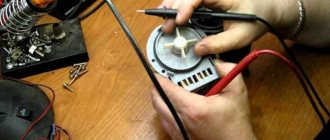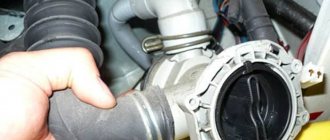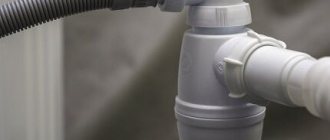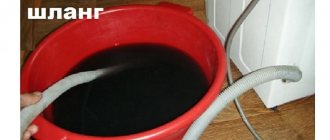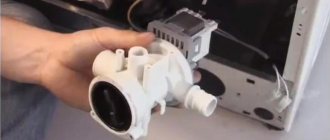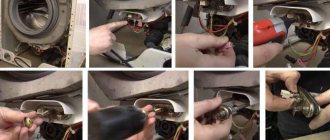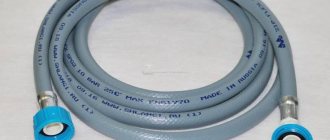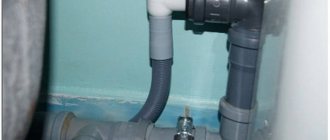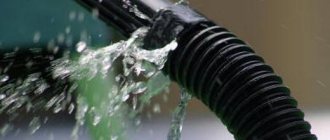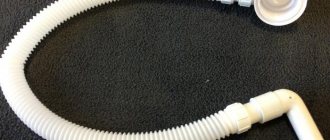In every modern apartment you can see an automatic washing machine in the kitchen or bathroom. Currently, manufacturers offer a huge number of different brands and models of washing units, which operate on the same principle, but are most often equipped with technological components of their own production.
Experienced craftsmen call the heart of the washing machine the drain pump, which ensures the normal functioning of the entire unit. Therefore, when a home assistant malfunctions, it is often necessary to know the types, classification and characteristics of pumps. Knowledge of the operating rules and features of caring for the washing machine pump will greatly extend the trouble-free service life of the entire unit.
Purpose
The washing machine pump performs one of the main functions in the correct and uninterrupted operation of the unit. The main role of using a drain pump is to remove dirty water from the washing machine tank. The entire washing cycle depends entirely on how this unit works, because the pump is involved in all washing modes (washing, rinsing, spinning and drying).
The need to periodically drain and collect water places a large load on the drain pump, so for trouble-free operation of the entire mechanism, you must follow the basic rules for operating the washing machine.
Drain pump device
Structurally, the drain pump (pump) for a washing machine is a low-power electric motor, on the shaft of which an impeller is mounted, which helps pump out used water.
The main components of the pump are:
- medium power electric motor;
- electric motor shaft;
- impeller;
- sealed casing in the form of a snail with two pipes.
One pipe of the housing is used to remove water from the washing machine tank, and the second is connected by a drain hose to the sewer.
The principle of operation of the washing machine pump and pump
Today, all existing automatic washing machines receive water on its own, that is, under pressure from the tap, to which the structure is attached.
When the owner selects a specific command from the programs provided by the machine, a special magnetic valve that allows water to pass through opens to allow the required amount of water to flow into the drum.
The water level in the drum is controlled by a special sensor called a pressure switch.
As soon as the water enters the washing machine, it passes through all the patches with laundry detergents, mixes along the way, and then enters the drum; during the entire washing process, the water will remain in it.
After the wash is finished, all this used water enters the pump through a special hose.
The pump, paired with a pump, begins to pump out used water from the drum into the sewer hole through the drain hose; this process begins after a special signal from the washing machine system and will continue until the water completely disappears from the tank.
Exactly the same process will occur in the rinsing mode, however, without a variety of laundry detergents and various conditioners. The spin mode occurs with the same participation of the pump and pump.
Technical characteristics of the drain pump
The main characteristics of different models of washing machine drain pumps may vary depending on the power of the units.
Standard technical indicators are:
- productivity about 20 liters of water per minute;
- rated power of the electric motor is about 30 W;
- the motor winding has a resistance of about 160 Ohms;
- the ability to lift water up to a maximum of one meter;
- The water temperature should not be higher than 90 °C.
To protect the electric motor winding from overloads, a thermal relay is installed, which is designed to operate at a coil temperature of 150 °C.
What can be done from an old pump?
A homemade water pump will replace manual labor - with a little tinkering, you will create an electromechanical device that will free you from the need to carry watering cans and buckets. However, it is not suitable for a large plot - the pump power is too small, but in a small garden it will be very useful. It is also suitable for supplying water to a fountain and for creating a backup water source so that your flowers are not left without watering if the main pump breaks down.
Related article: Indesit washing machine does not drain water
What pumps are suitable?
To water the area, it is better to use pumps from old Soviet machines - only they are capable of dispensing up to 30 liters of water per hour. The pumps of new machines are not even capable of such a volume.
Types of pumps
Currently, there are two types of drain pumps for washing machines:
1. The circulation pump is used mainly in premium washing units. Such a pump supplies washing liquid directly to the place of washing and produces forced circulation of water during the work process. Typically, a circulation pump is installed together with a simple drain pump that pumps out water. This design solution allows you to wash dirty laundry much more efficiently.
2. Cheaper models use an ordinary drain pump, which only removes liquid from the tank into the sewer system.
Also, drain pumps in different models of washing machines may differ in the shape of the volute and the type of filter that is located inside the housing.
Pump device
A washing machine pump is a low-power asynchronous motor, which is equipped with a magnetic rotor with a rotation speed of about 3000 rpm.
Pumps (drains) can differ from each other in appearance (“snails”), as well as integrated filters that stop a variety of debris and small objects in dirty water.
Modern high-cost SMAs have only two types of pumps:
- Drain;
- Circular;
Drain pumps pump out dirty water after the washing process is completed, circular ones are responsible for circulating water in the washing and rinsing modes. Other less expensive cars only have drain pumps.
In its design, the pump rotor (drain) is somewhat similar to a cylindrical magnet.
The blades (which are attached to the rotor axis) are rotated at an angle of 180 degrees to it.
When the drainage device starts, the rotor comes into play first, after which the blades begin to spin. The engine core is equipped with two windings that are connected to each other. Their resistance together is about 200 Ohms.
If we talk about low-power washing machines, their external fitting will always be located in the middle of the body. It has special valves (rubber) of reverse action, which do not give water a chance to get into the tray of the washing machine from the drain tube.
Under the pressure of the liquid, the valve opens, and when the pressure from the water supply network stops, the valve immediately closes.
Other types of drain pumps only allow fluid to flow in one preset direction.
In such designs, in order to prevent gravity flow of liquid, special cuffs are used for sealing. These seals prevent water from getting into the bearing. The shaft (rotor) in such a device will pass through the main collar bushing, which will be equipped on both sides with corrugations and a crimp made from a special spring ring.
Before installing the cuff into the bushing, it is pre-treated with a special lubricant so that a large layer of this lubricant appears on the surface of the cuff. This move increases the service life of the element.
Operating rules
If you properly care for the pump for an automatic washing machine, its service life will last on average about 10 years.
To ensure that this period does not decrease, you need to:
Provide the machine with clean water (it is necessary to check the pockets in your clothes before washing for the presence of foreign objects and remove them, it is also better to remove pieces of dried dirt before putting the item in the drum);- Monitor the performance and serviceability of filters;
- Do not let scale appear (use special products for this);
- Completely empty the drum of water upon completion of the washing process (wait until the water disappears from the tank to 100%).
If the pump breaks, no one ever repairs it, but buys a new one. This is not the responsibility of the owner, but of a master, a specialist called from the center.
Main malfunctions of the drain pump
During the washing process, the washing machine pump is switched on several times, depending on the selected mode. Therefore, a large load on the parts of this important unit is the main reason for pump failure.
Typical drain pump malfunctions are:
- frequent activation of thermal protection of the electric motor winding;
- clogging of the impeller, which leads to its jamming;
- damage to the impeller blades by foreign objects;
- premature wear of the bushings located on the motor shaft;
- the pump impeller rotates or falls off the electric motor shaft;
- short circuit or broken motor winding turns.
All these breakdowns lead to repair of the washing machine pump. Typically, repair work can be carried out after minor faults occur, such as clogged impellers, as well as minor damage to the blades. Other breakdowns lead to a complete replacement of the washing machine pump.
Replacing the pump through the bottom of the washing machine
The drain pump is located at the bottom of the unit, under the tank. Only it can be accessed through the bottom of the washing machine or after removing the front panel.
The pump for a Samsung washing machine is replaced through the bottom of the unit.
Instructions for dismantling the drain pump are as follows:
- Be sure to unplug the washing machine from the electrical outlet.
- Shut off the water supply before disassembling.
- Carefully place the washing machine on its side. In this case, the pump should be on top of the unit.
- Release the bottom of the machine from the lower protective panel. For this purpose, it is necessary to remove the fastening latches.
- If there is a plastic protective casing for the pump, this element must also be removed.
- Near the pump valve you will see screws securing the unit, which need to be unscrewed.
- Carefully pull the pump towards you.
- Then disconnect the pump power cables.
- Over a previously prepared container, so as not to spill the remaining water, loosen the hose clamps.
- If the pump has a volute, then you need to disconnect it too. In the future, if there are no complaints about this element, then after cleaning the snail can be left.
Installing a new or repaired pump is carried out in the reverse order.
A similar method is used to dismantle the pump in washing machines Indesit, LG, Beko and some other models.
Removing the pump through the front panel
Replacing the pump of a Bosch, Siemens and some other brands of washing machines is done after removing the front panel of the unit, since the bottom of such machines is closed.
Dismantling the drain pump is carried out as follows:
- First of all, you need to remove the top cover of the unit. To do this, you need to unscrew the mounting screws on the back of the machine, and then push the cover away from you from the front panel.
- The next step is to dismantle the control panel. For this purpose, remove the tray for washing powder and unscrew the screws securing the panel. After removing the screws, the panel is carefully placed on the top of the unit so as not to damage the connecting wires.
- Under the plastic protective panel there is a drain valve, which must be carefully removed above the container to drain the remaining water.
- Then you need to remove the sealing collar from the loading hatch.
- Thus, by dismantling the front panel, we will gain access to the pump.
- Having unscrewed the mounting screws of the pump and the front wall, you can begin to dismantle the pump.
- Having loosened the clamps on the pump nozzles, remove the connecting hoses.
After completing all these operations, we inspect the pump and impeller. In case of minor breakdowns, we clean the pump parts from contamination. Installing a new drain pump is done in the reverse order.
In top-loading washing machines, the pump is removed through the rear wall.
Pump operating rules
In order for any complex technical unit to reach its service life, you need to monitor its condition and follow some additional recommendations from the washing machine manufacturer:
- Before washing, check the pockets in your clothes to prevent small objects from getting into the rotating components of the unit.
- Use only a special detergent for automatic machines, which contains anti-scale additives.
- It is advisable to install a filter on the water supply system so that small particles of rust from the pipes do not get inside the machine.
- It is better to soak very dirty laundry before washing.
Remember that if signs of a problem with your washing machine appear, you must immediately begin to identify and repair the problem. It is easier to replace a failed drain pump than to replace the entire unit in the future.
How to prevent pump failure
If you follow these recommendations, you can significantly extend the life of the drain pump.
Always remove foreign objects from pockets before washing.- Use bags for washing clothes.
- In case of strong, coarse dirt, clean things, and also remove animal hair by hand before entering the machine.
- Install filters at the inlet of the filler pipe.
- Carry out scale prevention.
- When washing items with buckles or rivets, turn the items inside out.
